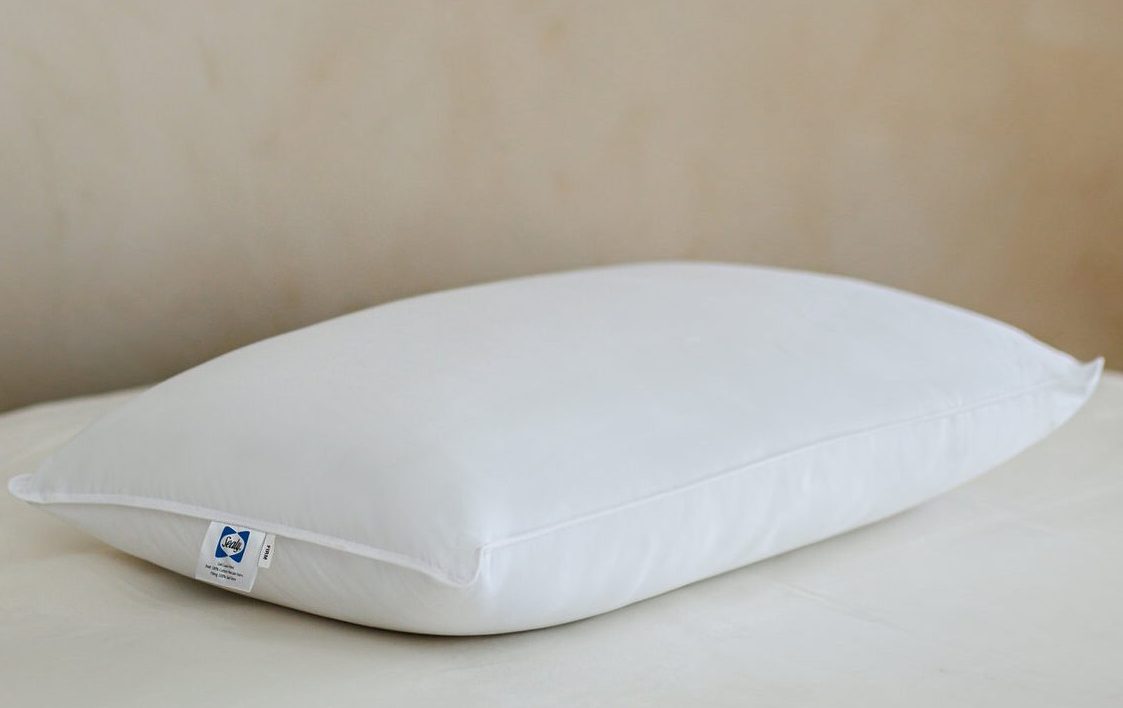
Most experts agree that you should change your pillow every 1–2 years to maintain a supportive and hygienic sleep surface. Just like a mattress, your pillow contributes to the quality of your rest. When a pillow is unsupportive, uncomfortable, aged or unclean, your sleep is likely to suffer as a result.
There are a number of common signs that your pillow may need replacing sooner or later, from its shape and colour to overall performance. We break these down in our article and list the general guidelines for replacing pillows depending on their material and type. We also offer some tips to extend the lifespan of your pillow and get the most out of your sleep investment.
Why it's important to change your pillow
Getting plenty of quality sleep each night is vital to our overall health and wellbeing, and your pillow plays an important role in this process. In the same way that a mattress works to support your spine, your pillow supports your head, neck and shoulders for optimal sleeping posture. With the right pillow, you are likely to enjoy deeper, more refreshing and comfortable sleep. On the other hand, a poorly suited pillow, or a pillow that has lost its shape, can lack the support you need, contributing to muscle soreness and disturbed rest. Pillows eventually lose their structure over time, and need replacing in order to keep you adequately supported and comfortable.
Beyond supporting your body, your pillow is also a space of cushioning comfort and relaxation, a space where your face and hair rest for many hours each night. In doing so, your pillow comes into contact with your body’s natural secretions, oils and sweat, plus your skincare and haircare products. It will also gradually accumulate dirt, bacteria, dust mites and pet dander. These elements can be irritants and allergens, so it is important to clean your pillow and eventually replace it to avoid buildup that may cause breakouts and allergic reactions.

Signs your pillow needs replacing
Your pillow will begin to show signs that it is ageing or lacking in support, signalling the need to either wash or replace your pillow and preserve the quality of your sleep. It may become misshapen, discoloured or begin to lose its supportive properties over time.
Lacking support
If your pillow previously felt supportive and comfortable, but is now sagging in the middle, it may be time for a change. Your head, neck and shoulders should be appropriately supported to preserve spinal alignment; if your head is beginning to sink down too far, or you are waking up stiff and sore, your pillow may have lost its ability to support you appropriately.
Changes in shape
Check for signs that your pillow has become flat or uncomfortable, or if there is a clear divot in the middle where you normally sleep. You may find that you are constantly fluffing your pillow in an attempt to restore its shape, or you can feel lumps where the filling is coming apart or drifting to the sides. If you can fold your pillow in half or hang it over your arm without it trying to spring back to form, then it has likely lost its shape and is no longer supporting you as it should.
Changes in colour
A clear sign that a pillow needs to be changed is its colour. A dirty pillow can be washed, but oftentimes an old pillow that is yellowed or stained is in need of replacing. The yellow colour indicates an accumulation of moisture and bacteria, usually from face and hair oils, sweat and other secretions. If your pillow remains discoloured or has a smell after washing, it may be time to replace your pillow altogether, especially if it is more than 2 years old.

When to change different types of pillows
It is generally recommended by sleep experts to replace your pillow every 1-2 years, but this depends on the type and material of your pillow, as well as how often you use it. Regardless of how long your pillow is supposed to last, if it no longer performs as intended, it is better to replace it ahead of time rather than sacrificing the quality of your sleep.
As a general rule of thumb, however, you can expect to change your pillow based on the following timeframes:
| Type of pillow | When to replace your pillow |
|---|---|
| Polyester | 0.5–2 years |
| Cotton | 1–2 years |
| Gel/cooling | 1–2 years |
| Down alternative | 1–2 years |
| Down/feather | 2–3 years |
| Wool | 2–3 years |
| Bamboo | 2–3 years |
| Memory foam | 2–3 years |
| Latex | 3–4 years |
| Buckwheat | 3–5 years |
How to extend the life of your pillow
There are several ways to care for your pillow and ensure it stays clean. This will help to extend the life of your pillow so it continues to serve you well before you eventually need to purchase a replacement.
- Wash your pillow regularly to prevent excessive buildup of irritants, allergens and dirt. Experts suggest this should be done every 6 months. You can put most pillows in the washing machine and tumble dryer, but always check your pillow’s care tag. Read more: How To Wash Your Pillow
- Use a pillow protector in addition to a pillowcase to keep your pillow clean and fresh between washes. You may wish to purchase a waterproof protector if you experience excessive oiliness, sweating or drooling throughout the night. Pillow protectors should be washed regularly alongside your standard pillowcases.
- Keep your pillow dry and avoid sleeping with wet hair. Allow your haircare and skincare products to dry before lying down to sleep. Additionally, ensure you spot clean and dry any spills before using your pillow.
- Rotate your pillow on a regular basis to ensure it wears more evenly. This will help to preserve its shape, especially if the pillow is made of memory foam or contouring materials.
Key summary
- Most pillows should be replaced after 1–2 years
- Your pillow is an important factor in sleep health and overall wellness
- Change your pillow if it lacks support, has lost its shape or has turned yellow
- Extend the lifespan of your pillow with proper care: wash and rotate regularly, use a protector, and keep dry.
Frequently asked questions
Most pillows should be changed after 1–2 years, or earlier if it has lost its shape, become uncomfortable, or has turned yellow in colour.
Most pillows should be replaced after 1–2 years, or earlier if it has lost its shape, become uncomfortable, or has turned yellow in colour.
You can tell if you need to replace your pillow if it has become uncomfortable and no longer supports you at night. It may have lost its shape or become saggy in the middle. You should also replace your pillow if it has turned yellow or has an odour, indicating a buildup of bacteria, moisture and dirt.
Yes, you should wash your pillow approximately every 6 months in order to keep it fresh and clean.





